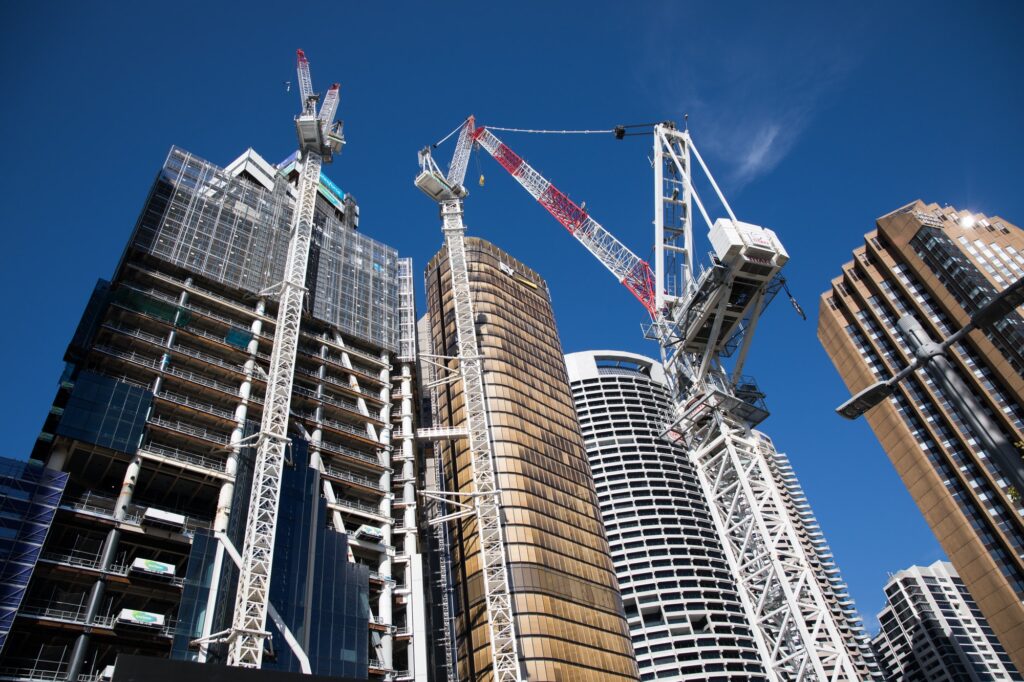In this article, we will analyze the macro-economic outlook and expectations for the coming years for the global construction industry in 2024, based on the latest data and expert opinions. We will also discuss the main challenges and opportunities that the global construction industry faces and offers, as well as the implications and recommendations for the stakeholders and actors of the sector.

Macro-economic outlook for the global construction industry in 2024
According to the World Bank, the global economy is expected to grow by 4.3% in 2024, up from 4.1% in 2023, as the recovery from the COVID-19 pandemic continues, supported by the vaccination progress, the stimulus measures, and the external demand1. However, the global economic outlook remains highly uncertain and uneven, as the pandemic situation evolves, the inflation and debt pressures rise, and the environmental and social challenges persist.
According to the GlobalData, the global construction industry is expected to regain some growth momentum from 2024, assuming an improvement in global economic stability, with output expanding by 3.0% in 2024 and recording an annual average of 4.2% during 2025–20272. However, the global construction outlook also varies significantly across regions and segments, as the impact and response of the pandemic, the dynamics and trends of the markets, and the innovation and development of the technologies differ.
Some of the key regional and segmental outlooks for the global construction industry in 2024 are:
- Asia-Pacific: The Asia-Pacific region is the largest and fastest-growing region for the global construction industry, accounting for about 60% of the global construction output in 20232. The region is expected to maintain its growth momentum in 2024, driven by the recovery and resilience of the major economies, such as China, India, Japan, and Australia, as well as the stimulus and support of the key policies, such as the Infrastructure Investment and Jobs Act (IIJA), the Inflation Reduction Act (IRA), and the Creating Helpful Incentives to Produce Semiconductors (CHIPS) Act in the US, and the Belt and Road Initiative (BRI) and the Regional Comprehensive Economic Partnership (RCEP) in China34. However, the region also faces various challenges and risks, such as the uncertainty and volatility of the pandemic, the competition and rivalry of the geopolitics, and the pressure and scrutiny of the sustainability.
- Europe: The Europe region is the second-largest and moderate-growing region for the global construction industry, accounting for about 20% of the global construction output in 20232. The region is expected to improve its growth performance in 2024, driven by the recovery and reform of the major economies, such as Germany, France, Italy, and Spain, as well as the expansion and integration of the key policies, such as the Next Generation EU (NGEU) recovery fund, the European Green Deal, and the Digital Single Market5. However, the region also faces various challenges and risks, such as the impact and aftermath of the Brexit, the instability and fragmentation of the politics, and the innovation and adoption of the technology.
- North America: The North America region is the third-largest and slowest-growing region for the global construction industry, accounting for about 15% of the global construction output in 20232. The region is expected to increase its growth rate in 2024, driven by the recovery and stimulus of the major economies, such as the US and Canada, as well as the implementation and investment of the key policies, such as the IIJA, the IRA, and the CHIPS Act in the US, and the Investing in Canada Plan and the Canada Infrastructure Bank in Canada34. However, the region also faces various challenges and risks, such as the uncertainty and outcome of the 2024 US presidential election, the regulation and compliance of the trade and geopolitics, and the development and deployment of the technology.
- Residential: The residential segment is the largest and fastest-growing segment for the global construction industry, accounting for about 40% of the global construction output in 20232. The segment is expected to sustain its growth pace in 2024, driven by the recovery and demand of the housing market, especially in the emerging and developing economies, as well as the improvement and supply of the housing affordability and availability, especially in the advanced and developed economies6. However, the segment also faces various challenges and risks, such as the volatility and inflation of the material prices and interest rates, the shortage and skills of the labor force, and the sustainability and quality of the housing standards.
- Non-residential: The non-residential segment is the second-largest and moderate-growing segment for the global construction industry, accounting for about 35% of the global construction output in 20232. The segment is expected to improve its growth performance in 2024, driven by the recovery and investment of the commercial and industrial sectors, especially in the advanced and developed economies, as well as the innovation and development of the building design and technology, especially in the emerging and developing economies. However, the segment also faces various challenges and risks, such as the uncertainty and disruption of the pandemic, the competition and differentiation of the market, and the regulation and compliance of the policy.
- Infrastructure: The infrastructure segment is the third-largest and slowest-growing segment for the global construction industry, accounting for about 25% of the global construction output in 20232. The segment is expected to increase its growth rate in 2024, driven by the recovery and stimulus of the public and private sectors, especially in the advanced and developed economies, as well as the expansion and integration of the infrastructure connectivity and quality, especially in the emerging and developing economies. However, the segment also faces various challenges and risks, such as the complexity and feasibility of the project, the financing and governance of the investment, and the sustainability and resilience of the infrastructure.

Challenges and Opportunities for the global construction industry in 2024
The global construction industry faces various challenges and risks, such as the uncertainty and volatility of the pandemic, the competition and rivalry of the market, the regulation and compliance of the policy, and the innovation and adoption of the technology. However, the global construction industry also offers various opportunities and solutions, such as the recovery and resilience of the economy, the expansion and integration of the region, the improvement and supply of the sustainability, and the advancement and diffusion of the technology.
Some of the key challenges and opportunities for the global construction industry in 2024 are:
- Pandemic and recovery: The pandemic and recovery challenge is the challenge of coping with the health and economic impacts of the COVID-19 pandemic, and ensuring the recovery and resilience of the global construction industry. The pandemic and recovery challenge affects various aspects of the global construction industry, such as the production capacity, the supply chain reliability, the demand fluctuation, the worker safety, and the business viability. The pandemic and recovery challenge can be addressed by various opportunities and solutions, such as the health and safety protocols, the vaccination and testing programs, the stimulus and support measures, the online and remote platforms, and the agile and flexible systems.
- Market and competition: The market and competition challenge is the challenge of maintaining and enhancing the market share and competitiveness of the global construction industry, in the face of the changing and demanding consumer behavior, the shifting and diversifying buyer preferences, and the emerging and evolving competitor strategies. The market and competition challenge affects various aspects of the global construction industry, such as the product quality, the price affordability, the design innovation, the brand reputation, and the customer loyalty. The market and competition challenge can be addressed by various opportunities and solutions, such as the data and analytics, the customer relationship management, the product lifecycle management, the e-commerce and social media, and the smart and functional buildings.
- Policy and compliance: The policy and compliance challenge is the challenge of complying and aligning with the policy and regulatory requirements and expectations of the global construction industry, in terms of the environmental and social sustainability and responsibility, the trade and geopolitics, and the innovation and development. The policy and compliance challenge affects various aspects of the global construction industry, such as the emission reduction, the waste management, the labor rights, the trade agreements, and the intellectual property rights. The policy and compliance challenge can be addressed by various opportunities and solutions, such as the sustainable materials, the circular economy, the traceability and transparency, the trade facilitation, and the research and development.
- Technology and innovation: The technology and innovation challenge is the challenge of developing and adopting the technology and innovation solutions and opportunities of the global construction industry, in terms of the automation and digitalization, the artificial intelligence and machine learning, and the sustainable materials and processes. The technology and innovation challenge affects various aspects of the global construction industry, such as the production efficiency, the distribution flexibility, the consumption personalization, the data security, and the skill development. The technology and innovation challenge can be addressed by various opportunities and solutions, such as the robotics and intelligent manufacturing, the internet of things and cloud computing

Conclusion and Recommendations
The global construction industry is a vital and dynamic sector, that contributes to the development of infrastructure, buildings, and services that are essential for the well-being and prosperity of societies. However, the global construction industry is also a volatile and uncertain sector, that requires a strategic and adaptive approach, that considers the macro-economic outlook and expectations, the challenges and technologies, and the opportunities and strategies of the sector.
Therefore, we recommend the following actions for the global construction industry, to ensure its sustainability and competitiveness in the changing and competitive environment:
- **Strengthen the collaboration and coordination among the stakeholders of the global construction industry, such as the governments, the industry, the academia, and the civil society, to create a common vision and agenda, and to leverage the synergies and complementarities of the sector.
- **Invest in the research and development of the technologies and innovations of the global construction industry, such as the automation, digitalization, artificial intelligence, and sustainable materials, to enhance the capabilities and opportunities of the sector, and to address the challenges and risks of the sector.
- **Enhance the skills and capabilities of the workers and the businesses of the global construction industry, to enable them to adapt and thrive in the automation and digitalization environment, and to provide them with the education and training, the support and incentives, and the protection and empowerment of the sector.
- **Promote the sustainability and responsibility of the global construction industry, to improve the environmental and social performance and impact of the sector, and to meet the policy and regulatory requirements and expectations of the sector, as well as the consumer and buyer preferences and demands of the sector.





